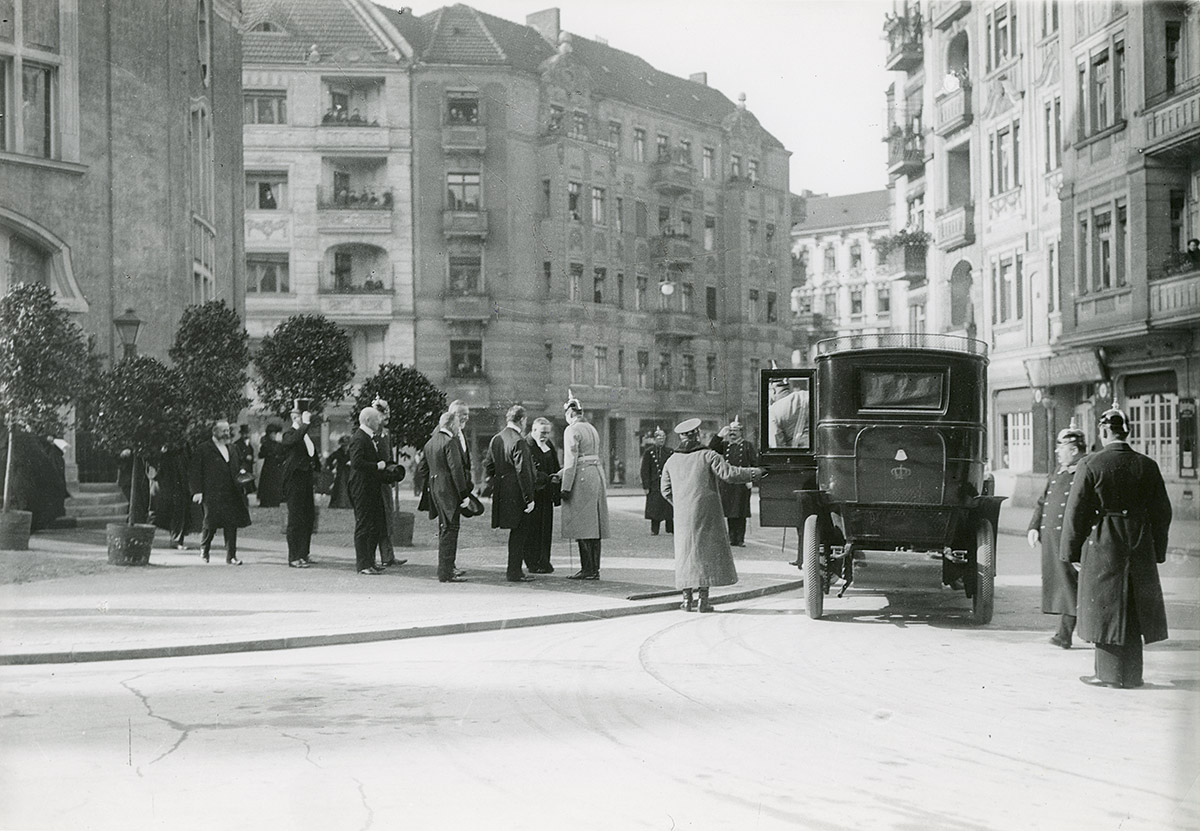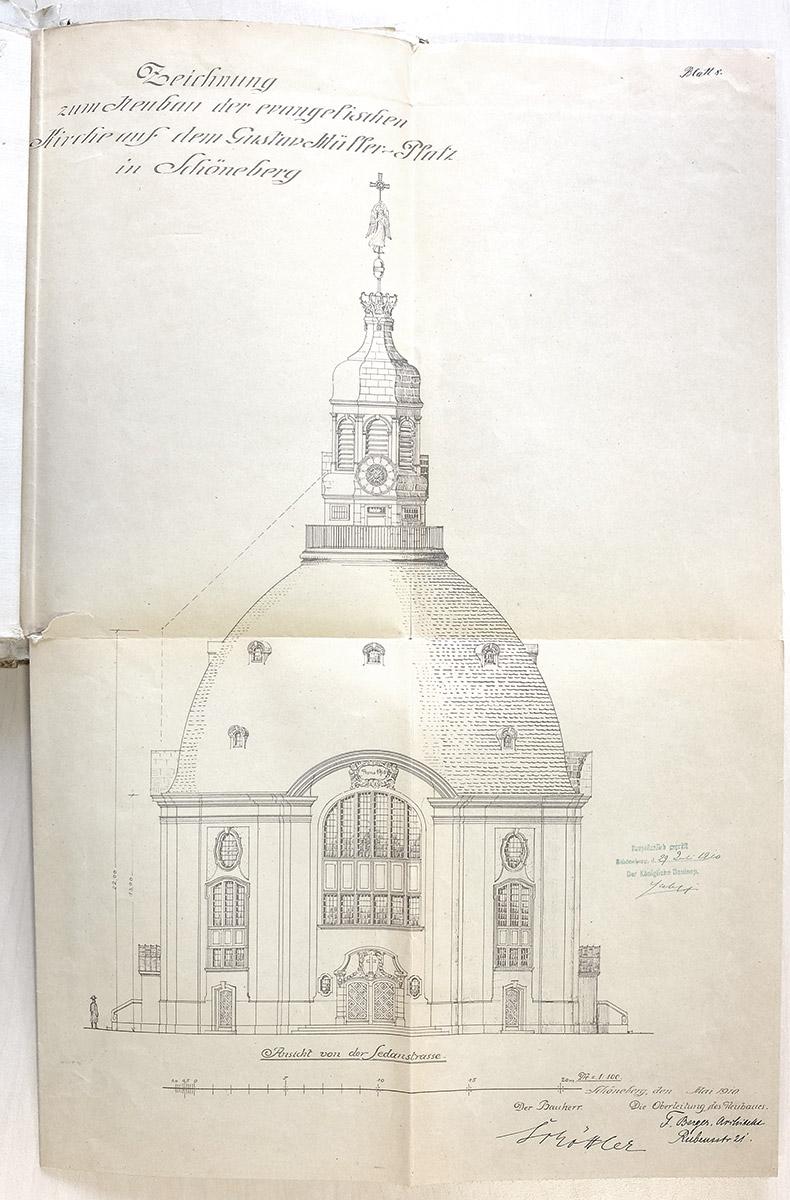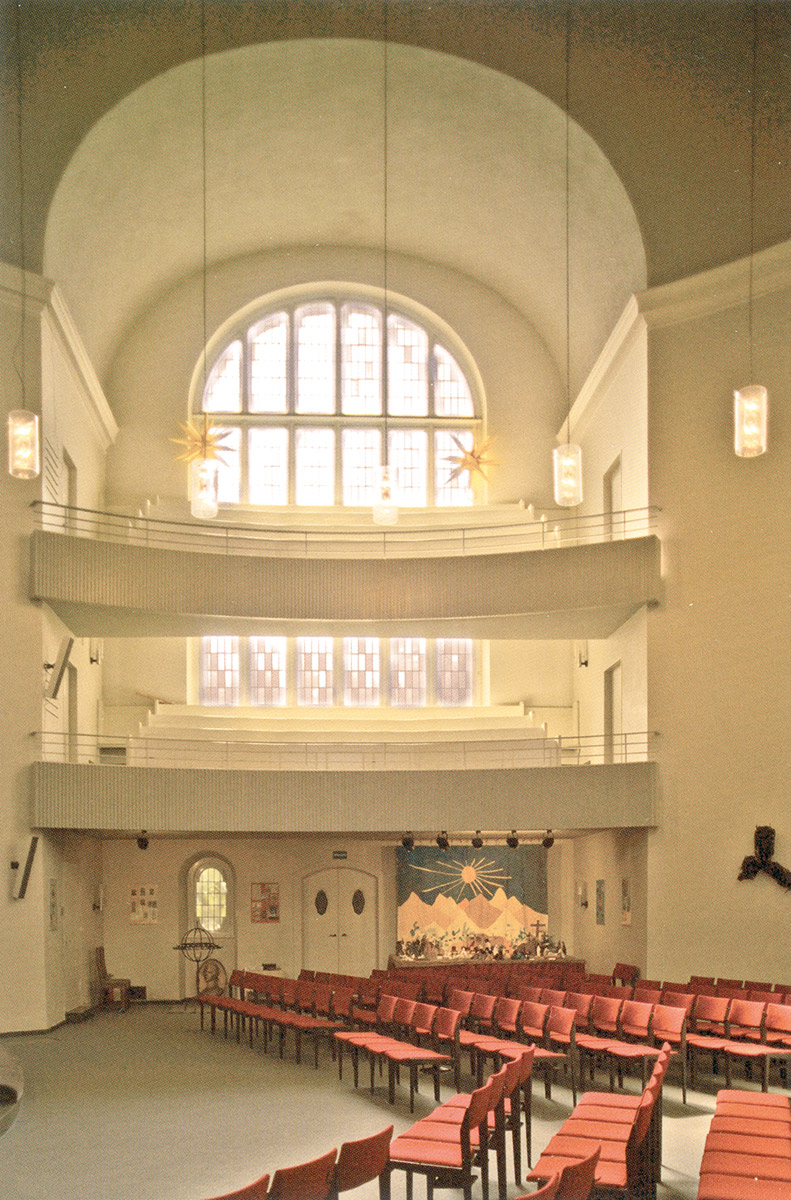A church for the Insel
In 1905 30,000 people were already living in Schöneberger Insel, but they had no church of their own; the nearest was the Apostle Paul Church. The Protestant parish therefore bought a parcel of land at Gustav-Müller-Platz from the Schöneberg station soil association in order to build a church for the inhabitants of the Insel.
The church was consecrated on 10 March 1912 on the 136th anniversary of the birth of Queen Luise of Prussia, after whom the church is named. Due to its striking neo-Baroque dome the structure was colloquially given the nickname “cheese cover”.
The workers of Schöneberger Insel traditionally tended to vote SPD or KPD and were not religious.
Queen Luise Memorial Church
In 1908 the community put out a tender for the construction of the church at Gustav-Müller-Platz. Three of the 168 designs for the competition were awarded prizes, but none was realised. The design by the architect Fritz Berger from Friedenau was finally chosen from a “closer selection” of five participants. Based on the model of a Baroque domed church, Berger designed an octagonal central structure that is now a protected historical building.
The church survived the Second World War largely undamaged and the original façade has been preserved. The more than 15 metres high interior space was extensively restored in 1962 and the chancel was redesigned in 1979 by the Berlin artist Volker Haase. After more than 100 years the outer shell of the church needs to be restored. Since 2016 the protected monument is being renovated in accordance with its original intentions.



